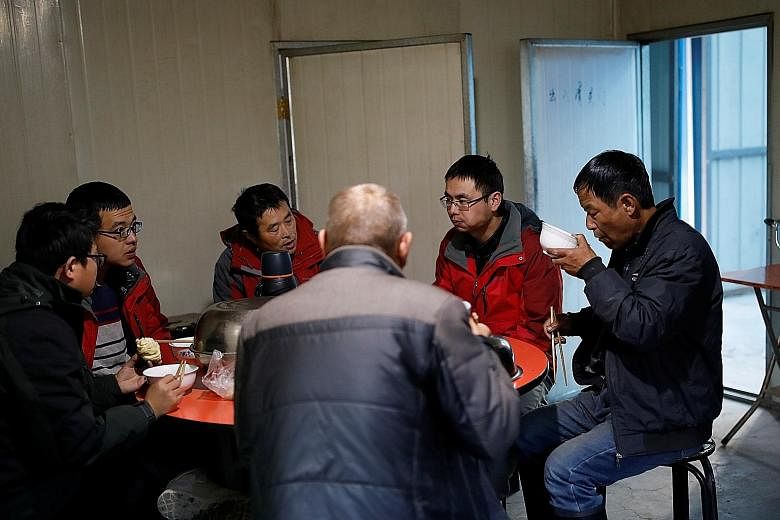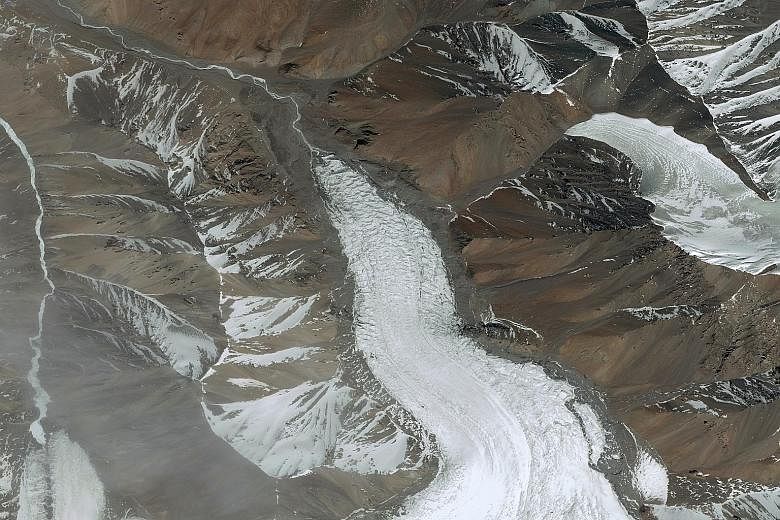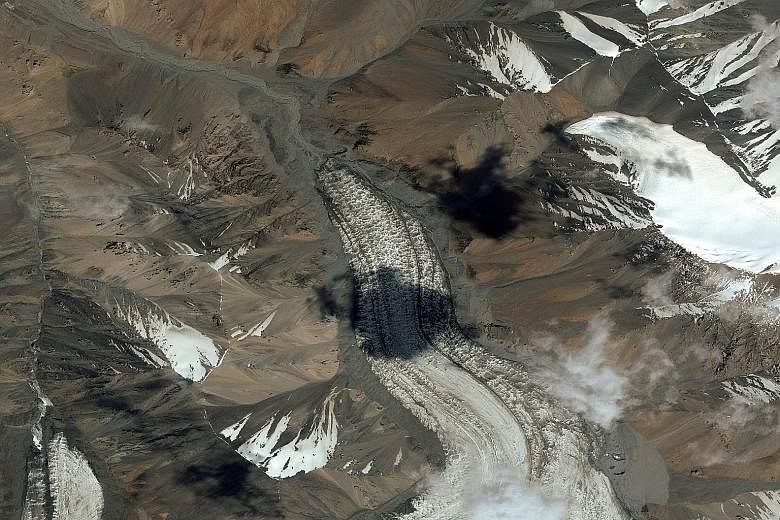QILIAN MOUNTAINS (Gansu) • Glaciers in China's bleak Qilian mountains are disappearing at a shocking rate as global warming brings unpredictable change and raises the prospect of crippling, long-term water shortages, according to scientists.
The largest glacier in the 800km mountain chain on the arid north-eastern edge of the Tibetan plateau has retreated about 450m since the 1950s, when researchers set up China's first monitoring station to study it.
The 20 sq km glacier, known as Laohugou No. 12, is criss-crossed by rivulets of water down its craggy, grit-blown surface.
It has shrunk by about 7 per cent since measurements began, with melting accelerating in recent years, scientists say. Equally alarming is the loss of thickness, with about 13m of ice disappearing as temperatures have risen, said Mr Qin Xiang, the director at the monitoring station.
"The speed that this glacier has been shrinking is really shocking," he told Reuters on a recent visit to the spartan station in a frozen, treeless world where he and a small team of researchers track the changes.
The Tibetan plateau is known as the world's Third Pole for the amount of ice long locked in the high-altitude wilderness. But since the 1950s, average temperatures in the area have risen about 1.5 deg C, Mr Qin said, and with no sign of an end to warming, the outlook is grim for the 2,684 glaciers in the Qilian range.
Across the mountains, glacier retreat was 50 per cent faster in 1990-2010 than it was from 1956 to 1990, data from the China Academy of Sciences shows.
"When I first came here in 2005, the glacier was around that point there where the river bends," Mr Qin said, pointing to where the rock-strewn slopes of the Laohugou valley channel the winding river to lower ground.
The flow of water in a stream near the terminus of the Laohugou No. 12 runoff is about double what it was 60 years ago, Mr Qin said.
Further downstream, near Dunhuang, once a major junction on the ancient Silk Road, water flowing out of the mountains has formed a lake in the desert for the first time in 300 years, state media reported.
Global warming is also blamed for changes in the weather that have brought other unpredictable conditions. Snowfall and rain had at times been much less than normal, so even though the melting glaciers have brought more runoff, farmers downstream can still face water shortages for their crops and their animals.
Large sections of the Shule River, on the outskirts of Dunhuang, were either dry or reduced to murky patches of pool, isolated in desert scrub when Reuters visited in September.
The new fluctuations also bring danger. "Across the region, glacial melt water is pooling into lakes and causing devastating floods," said Greenpeace East Asia climate and energy campaigner Liu Junyan. "In spring, we're seeing increased flooding, and then when water is needed most for irrigation later in the summer, we're seeing shortages."
The melting in the mountains could peak within a decade, after which snow melt would sharply decrease due to the smaller, fewer glaciers, said China Academy of Sciences expert Shen Yongping.
REUTERS



